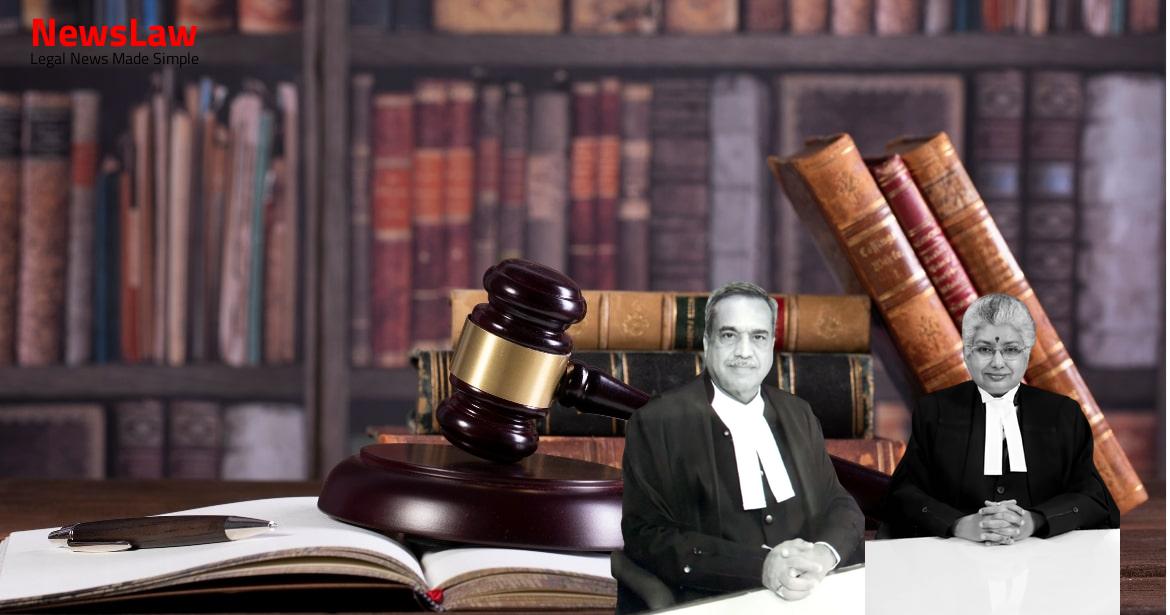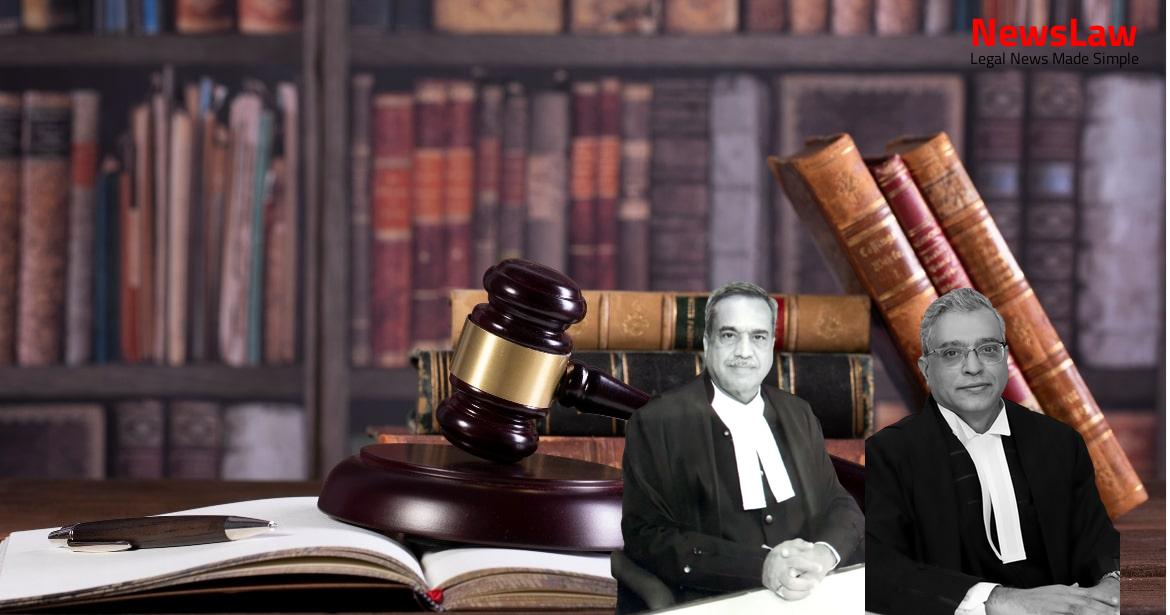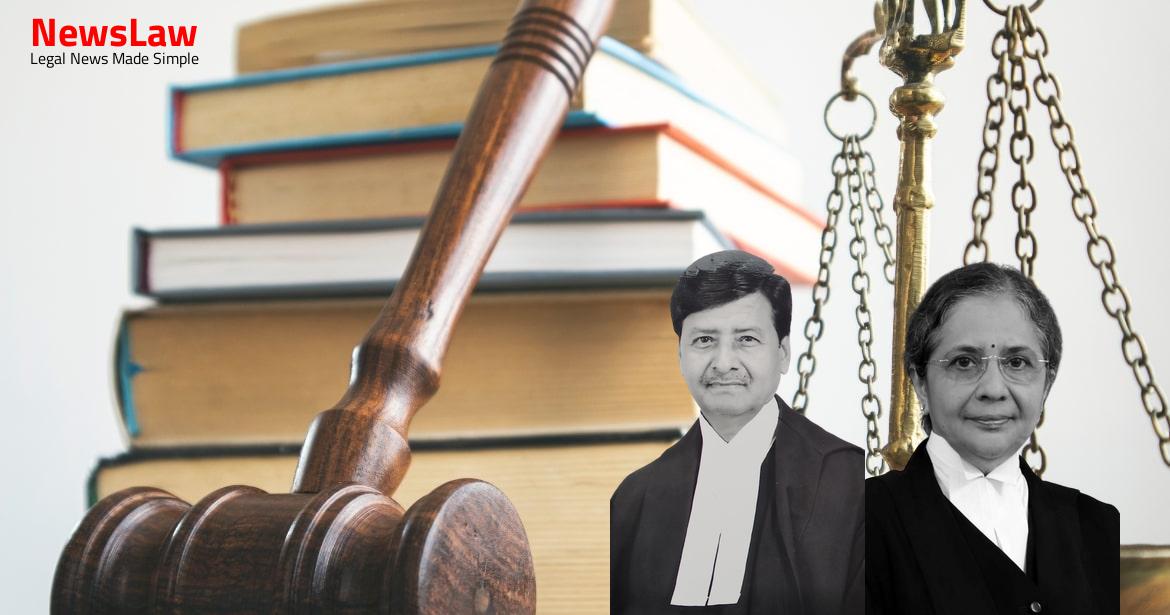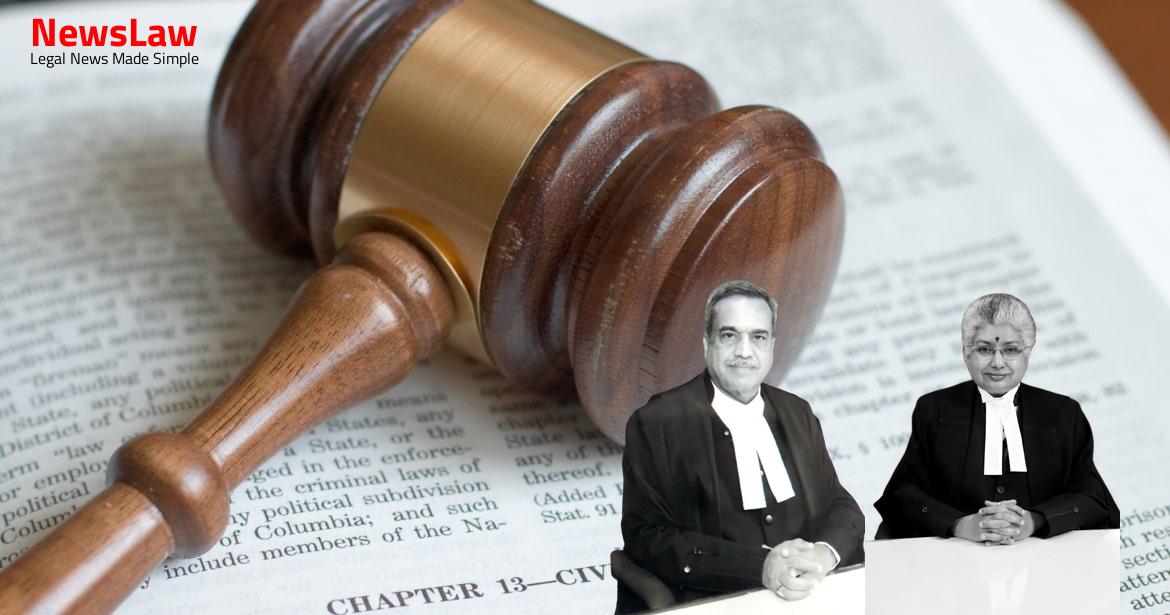By way of this writ petition under Article 32 of the Constitution of India, the respective writ petitioners – Association of Old Settlers of Sikkim and Others have prayed for an appropriate writ, direction or order striking down Section 10(26AAA) of the Income Tax Act, 1961 (hereinafter referred to as the “Act, 1961”), more particularly, the definition of “Sikkimese” in Section 10 (26AAA) to the extent it excludes Indians who have settled in Sikkim prior to the merger of Sikkim with India on 26.04.1975. Explanation.-
For the purposes of this clause, “Sikkimese” shall mean- (i) an individual, whose name is recorded in the register maintained under the Sikkim Subjects Regulation, 1961 read with the Sikkim Subject Rules, 1961 (hereinafter referred to as the “Register of Sikkim Subjects”), immediately before the 26th day of April, 1975; or (ii) an individual, whose name is included in the Register of Sikkim Subjects by virtue of the Government of India Order No.26030/36/90-I.C.I., dated the 7th August, 1990 and Order of even number dated the 8th April, 1991; or (iii) any other individual, whose name does not appear in the Register of Sikkim Subjects, but it is established beyond doubt that the name of such individual’s father or husband or paternal grand- father or brother from the same father has been recorded in that register;” It is the case on behalf of the respective writ petitioners that by excluding the Indians from the definition of Sikkimese, the exemption granted under Section 10(26AAA) of the Act 1961, is not available to the Indian Settlers resulting in discrimination. Therefore, it is the case on behalf of the writ petitioners that exclusion of Indians who have settled in Sikkim prior to the merger of Sikkim with India on 26.04.1975 and consequently not granting the exemption granted under Section 10(26AAA) of the Act, 1961 to the class of Indians, who have settled in Sikkim prior to the merger of Sikkim with India on 26.04.1975 is arbitrary, discriminatory and the differentia do not have a rational nexus to the object sought to be achieved by the Statute in question.
The British control over Sikkim was recognized by China in the year 1890. Following British taking control of Sikkim, British Indian Subjects were allowed to hold Government employment in Sikkim. Under the said Regulations: (a) the persons falling under Clause 3 of the Regulations were to be entered as a “Sikkim Subject” in the Register; and (b) Persons who were citizens of another country were not to be registered as a “Sikkim Subject” unless he relinquishes the citizenship of the other country. 7 On 21.06.1975, the Home Department issued a notification stating that “all Sikkim Subjects (under the Sikkim Subjects Regulations, 1961) before 26.04.1975 were to be deemed Indian citizens”. 9
In the year 1988, a petition was moved in the Lok Sabha by a few MLAs of Sikkim stating that at the time of merger of Sikkim with India, only those people whose names were registered in the Sikkim Subject Register in 1961 were made Indian Citizens, but there were many other stateless persons who were present in Sikkim between the period 1946 and 1975 who were otherwise by the reason of their residence, domicile and allegiance, “Sikkimese”, and they should also be made Indians. 11
That thereafter the Government of India formed a Committee consisting of its officers and officers of the Sikkim Government and certain guidelines were made to decide who the persons were, who were omitted by mistake from being entered into the “Sikkim Subjects Register”.
15
Also Read: https://newslaw.in/case-type/civil/acquisition-of-land-and-deemed-lapse-under-the-act-2013/
In the year 1985, the Government of India, vide an amendment to the Income Tax Act, 1961 in the Finance Act, 1994, proposed an exemption from Income Tax to the Schedule Tribes in Sikkim as was being done in regard to other states. It appears that while discussing the matters relating to implementation of the Income Tax Act, 1961 to the State of Sikkim, the committee representing the State Government of Sikkim insisted on exemption for persons holding the Sikkim Subjects Certificate and their descendants and were made Indian Citizens vide the Sikkim Citizenship Amendment Order, 1989. 17 That in the year 2008, the Government of India, gave in to the demands of the State of Sikkim, and passed an amendment to the Income Tax Act, by the Finance Act, 2008, wherein Clause 26AAA was introduced in Section 10 of the Income Tax Act, and the persons of Indian origin in Sikkim were treated differently from the Sikkim subjects and persons who had become citizens of India by the Sikkim Citizenship Amendment Order 1989. dated the 7 August, 1990 and Order of even number dated the 8 April, 1991; or (iii) any other individual, whose name does not appear in the Register of Sikkim Subjects, but it is established beyond doubt that the name of such individual’s father or husband or paternal grandfather or brother from the same father has been recorded in that register;” 4.18 It appears that in view of Section 10(26AAA) of the Income Tax Act, 1961, effectively 94% of the residents of Sikkim are exempted from payment of Income Tax under the Income Tax Act, 1961.
Feeling aggrieved and dissatisfied with the definition of “Sikkimese” in Section 10(26AAA) to the extent it excludes Indians (having Indian citizenship), who have settled in Sikkim prior to the merger of Sikkim with India on 26.04.1975 and thereby not granting the benefit of exemption under Section 10(26AAA) of the Income Tax Act to such Indians and being aggrieved by the Proviso to Section 10(26AAA), insofar as, it excludes from the exempted category “a Sikkimese woman, who marries a non-Sikkimese after 01.04.2008”, the present writ petitioners have prayed to strike down Section 10(26AAA) to the extent it excludes Indians, who have settled in Sikkim prior to the merger of Sikkim with India on 26.04.1975 and insofar as it excludes from the exempted category “a Sikkimese woman, who marries a non-Sikkimese after 01.4.2008, being arbitrary, discriminatory and violative of Article 14 of the Constitution of India.
Learned counsel appearing for the respective writ petitioners/intervenors have challenged the vires of Section 10(26AAA) of the Income Tax Act to the extent it excludes Indians, who have settled in Sikkim prior to the merger of Sikkim with India on 26.04.1975 and more particularly, the definition of “Sikkimese” in Section 10(26AAA) of the Income Tax Act and Proviso to Section 10(26AAA) of the Income Tax Act, insofar as, it excludes from the exempted category “a Sikkimese woman, who marries a non-Sikkimese after 01.04.2008”, mainly on the following grounds and making the following submissions:-1975 It is submitted that the exemption which has been granted to ‘Sikkimese” people residing in Sikkim essentially exempts 95% of the residents of Sikkim while taxing only a handful of persons including the 1% / 2% old Indian settlers; (iii) The exclusion of the old Indian settlers from the definition of ‘Sikkimese’ in Clause 10(26AAA) of the Income Tax Act is clearly violative of Article 14 of the Constitution of India and does not satisfy any of the tests laid down by this Hon’ble Court under Article 14; (iv) It is submitted that as consistently held by this Hon’ble Court that in order to be held valid any legislation under Article 14, the classification should be reasonable and must have a nexus with the object sought to be achieved; (v) It is contended that by way of the amendment, one single class of persons, namely, the citizens of India, are sought to be treated differently for the purpose of taxation; (vi) It is urged that to exclude the old Indian settlers from the exemption under Section 10(26AAA) has no nexus with the object sought to be achieved to grant the exemption to the residents of Sikkim; (vii) It is contended that therefore, there is no reasonable justification and/or classification to exclude those Indians, who have settled in Sikkim prior to the merger of Sikkim with India on 26.04.1975 solely on the ground that their names were not registered as “Sikkim Subjects” due to non-surrender of Indian citizenship at the relevant time; (ix) It is submitted that as such, the object and purpose of Section 10(26AAA) is to grant exemption from payment of tax under the Income Tax Act to the locals/residents of Sikkim and that is the object sought to be achieved by providing exemption under Section 10(26AAA) of the Income Tax Act. It is submitted that the classification into groups should be based on identifiable criteria, which sets apart one group from the other. In support of above submission that classification between the two groups similarly situated would be arbitrary and hit by Article 14 of the Constitution, Shri Vishwanathan, learned Senior Advocate, has heavily relied upon the decisions of this Court in the case of D.S.
It is submitted that in the present case, in order to remove the arbitrary discrimination against Indian settlers in Sikkim, the definition of “Sikkimese” in Section 10(26AAA) ought to be read to include Indians, who had settled there as on 26.04.1975.
Now, so far as challenge to the Proviso to Section 10(26AAA), insofar as it excludes from the exempted category “a Sikkimese woman, who marries a non-Sikkimese after 01.04.2008” is concerned, it is vehemently submitted by Shri K.V. However, he is not in a position to justify the classification and satisfy the Court how such a classification will achieve the object and purpose of granting exemption under Section 10(26AAA) of the Income Tax Act.
1 Shri Venkataraman, learned ASG is also not in a position to justify the Proviso to Section 10(26AAA) insofar as it excludes from the exempted category, “a Sikkimese woman, who marries a non-Sikkimese after 01.04.2008”. The challenge in the present petitions under Article 32 of the Constitution of India is :- (i)
Also Read: https://newslaw.in/case-type/civil/taxation-of-engineering-design-drawings-goods-or-services/
The definition of “Sikkimese” in Section 10(26AAA) to the extent it excludes the Indians, who have settled in Sikkim prior to the merger of Sikkim with India on 26.04.1975; and (ii) Proviso to Section 10(26AAA) insofar as it excludes from the exempted category “a Sikkimese woman, who marries a non-Sikkimese after 01.04.2008” 13. Meaning thereby, all those Sikkimese/Old Indian Settlers in Sikkim, who might have settled in Sikkim prior to 26.04.1975 but whose names are not registered as “Sikkim Subjects” in the register maintained under the Sikkim Subjects Regulations, 1961 are not entitled to the exemption available under Section 10(26AAA) of the Income Tax Act.
Therefore, all such Indians/citizens, who have settled in Sikkim prior to the merger of Sikkim with India on 26.04.1975 are to be treated at par and they form the same group/class and are entitled to the exemption under Section 10(26AAA) of the Income Tax Act. Therefore, there is no nexus sought to be achieved in excluding the Indians, who have settled in Sikkim prior to the merger of Sikkim with India on 26.04.1975 but their names are not recorded as “Sikkim Subjects”. In the present case, the exclusion of old Indian settlers, who have settled in Sikkim prior to the merger of Sikkim with India on 26.04.1975 from the definition of “Sikkimese” in Section 10(26AAA) does not fulfill the aforesaid two conditions.
It is observed that such an obvious discrimination can be supported only on the ground that it was based upon a reasonable classification. In view of the above and for the reasons stated above, we are of the firm opinion that Section 10(26AAA) to the extent it excludes the Old Indian settlers, who have settled in Sikkim prior to the merger of Sikkim with India on 26.04.1975, but whose names are not recorded as “Sikkim Subjects”, from the definition of “Sikkimese” is ultra vires, being arbitrary, discriminatory and violative of Article 14 of the Constitution of India. Now, so far as the challenge to the Proviso to Section 10(26AAA) insofar as it excludes from the exempted category, “a Sikkimese woman, who marries a non-Sikkimese after 01.04.2008” is concerned, there is no justification shown and/or demonstrated to exclude “a Sikkimese woman, who marries a non-Sikkimese after 01.04.2008” from the exempted category.
Case Title: ASSOCIATION OF OLD SETTLERS OF SIKKIM Vs. UNION OF INDIA (2023 INSC 29)
Case Number: W.P.(C) No.-000059-000059 / 2013



